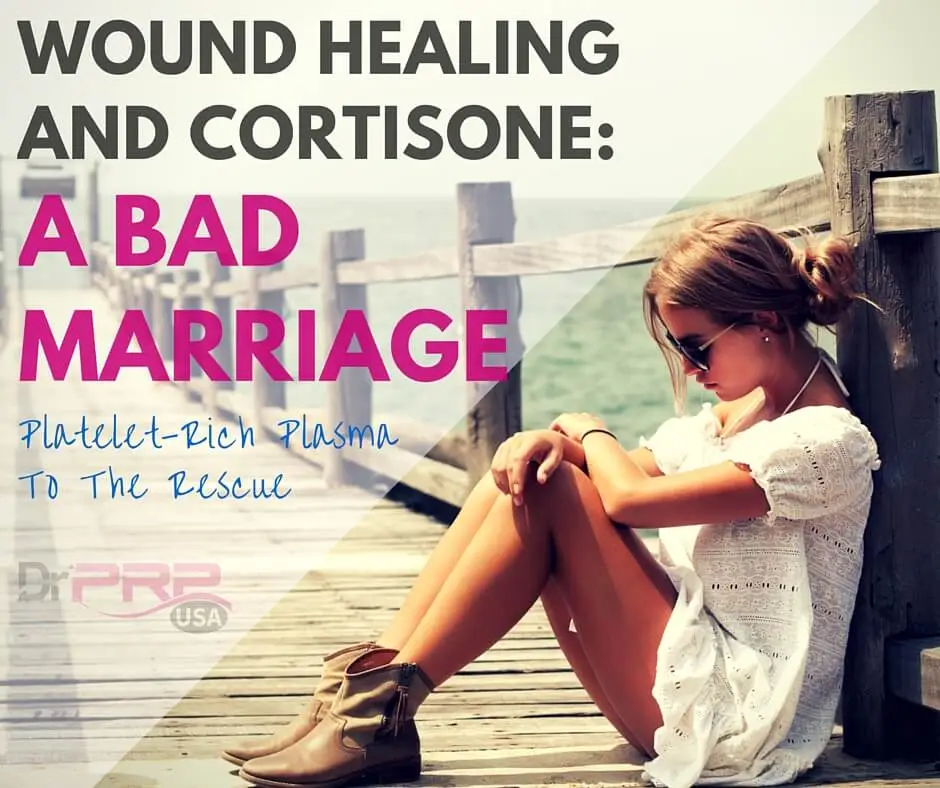| Item | Price | Qty | Total | |
|---|---|---|---|---|
 Loading Cart...
Loading Cart...Cortisone & Healing: The Bad Marriage Ends - New Study Reveals Successor

In 1950, Kendall, Hench, and Reichstein received the Nobel Prize for Physiology and Medicine for their discovery of cortisone. No doubt, it was a great step forward in our knowledge of the hormones of the adrenal cortex and their uses in medicine.
Today, cortisone shots are a leading Anti-inflammatory drug given to relieve pain and inflammation, especially for joints—ankle, elbow, hip, knee, shoulder, spine, and wrist.
The thing is, even the people who discovered it, knew cortisone is like insulin—it works only so long as it is given to the patient. And more cortisone actually accelerates degeneration of the soft tissue in the joints. Even though doctors now limit cortisone injections to 3-4 times a year per patient, it’s still causing harm by pulling the plug on body’s own healing mechanism.
Plus, the entire medical community knows that inflammation is a prerequisite for healing. We had briefly discussed this topic before in our blog, but it’s so important a topic that every time there’s a new study against Cortisone, I’m compelled to write.
The #1 Culprit for Joint Replacement Surgeries
Us, Americans do at least a million joint replacement surgeries every year. And one thing that runs common among all who’re having these surgeries is that almost all of them have had Cortisone shots in the past. In fact, Cortisone injections degenerate the joint so fast that joint replacement is inevitable for those who have them repeatedly.
And the #1 reason why people still get a cortisone shot? It’s covered by insurance. And, that way they can make the most of their insurance policies. But eventually, they get a free joint replacement surgery as a bonus too.
Platelet-Rich Plasma Injections: A Superior Alternative?
Latest research confirms Platelet-Rich Plasma as a worthy successor of Cortisone. Here in this research, Cortisone and PRP are compared side-by-side for treating Plantar Fasciitis. 60 heels with intractable plantar fasciitis were given PRP and Cortisone at 3, 6 and 12 months. Immediately after both treatments, patients with Cortisone were only marginally better than the patients with PRP. But in the long run, PRP crushes Cortisone completely. At 12-months, AOFAS score for Cortisone group was 88.5 compared to 75 for the PRP group (the lower the better).
This is the latest in a series of studies showing up over the years showing why PRP is better than Cortisone. Last year, Fox Valley Orthopedics’ Dr. James Sostak appointed PRP Injections as a successor to Cortisone for Tennis Elbow injuries.
“Tennis elbow is an excellent candidate for PRP treatment,” says Dr. Sostak. “A great deal of research suggests that PRP is superior to cortisone treatments, providing better pain relief, faster functional recovery, and helps the damaged tissues to heal.”
Naturally, Cortisone Hates PRP
Cortisone is no doubt powerful. When combined with PRP, it simply overpowers the effects of PRP. Because Cortisone pulls the plug on all healing activities of the body—including the recruitment of immune cells and stem cells. It’s like taking the batteries out of an alarm clock because it’s beeping while ignoring the fact that you’re late.
Hey, we can do better than that. Platelet-Rich Plasma not only accelerates healing, but also induces growth in ligaments, tendons and even cartilages. Plus, it boosts collagen, making skin appear remarkably better.
Platelets A Must for Wound Healing
The growth factors and stem cells that Platelet-Rich Plasma brings to the table are absolutely necessary for healing. Without them, our bodies simply can’t heal. All we’re doing with a PRP Injection is making them available in plenty. So, the ligament, the tendon, the knee meniscus, spine disc, or any other sports injury area can be healed quickly.
PRP In Addition to Other Treatments
The wonderful thing about PRP is that it can be used with almost all other remedies other than Cortisone. It can be used with stem cell procedures, physiotherapy, or any other healing modalities that actually enhance healing instead of inhibiting it. This makes PRP a multi-potential blessing—soon it’s going to be a default healing shot for all kinds of injuries.


